
El final de nuestra primera etapa del prólogo del Camino de Santiago fue
Ponte Maceira.
En el año 2017, emprendí con mi hijo el Camino a Finisterre. He realizado con él cinco Caminos y guardo muy buenos recuerdos de todos aquellos días de convivencia. El que hicimos a Finisterre fue el cuarto.

Llegamos por la mañana a Santiago y rápidamente nos pusimos en marcha. Desde la plaza del Obradoiro, frente a la catedral de Santiago, comenzamos a andar.
Poco a poco, nos fuimos alejando del “Campo de estrellas”(compostela) hasta que perdimos de vista las torres de la Catedral. Finalmente, nos introducimos en un bosque.

Fue una etapa llena de repechos, con frecuentes subidas y bajadas. Una etapa “rompepiernas” pero, como era nuestro primer día, caminamos con fuerza y alegría, entusiasmados.
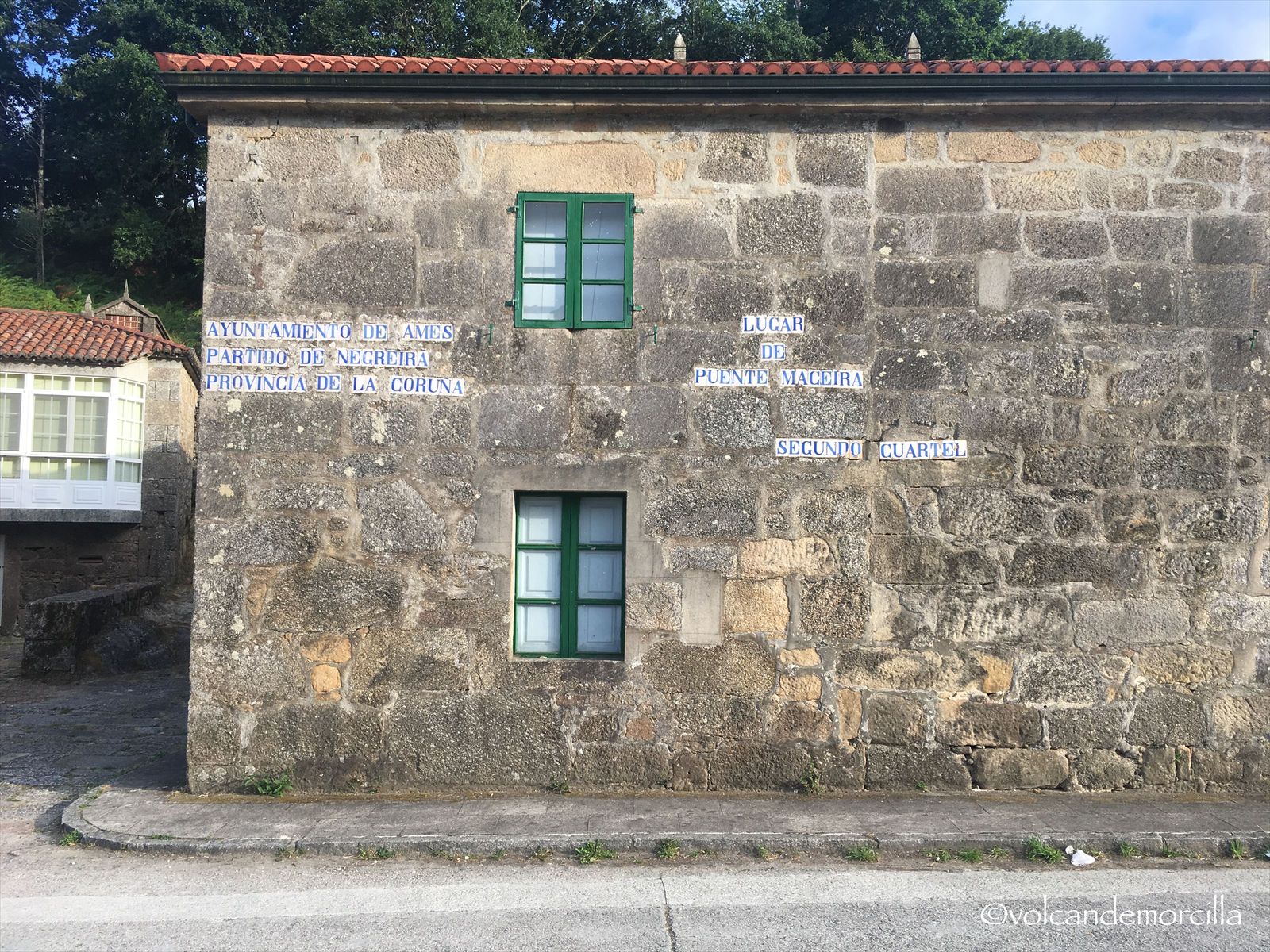
Al final, llegamos a Ponte Maceira, un fin de etapa extraordinario. Recorrimos el puente y la vereda del río. Disfrutando del sonido del agua y haciendo varias fotos antes de cenar.

Ponte Maceira es un pueblo que ha conservado sus antiguas casas de piedra y está integrado en un bosque. Tiene un puente de piedra medieval construido en el siglo XIII, sobre los cimientos de un puente romano.
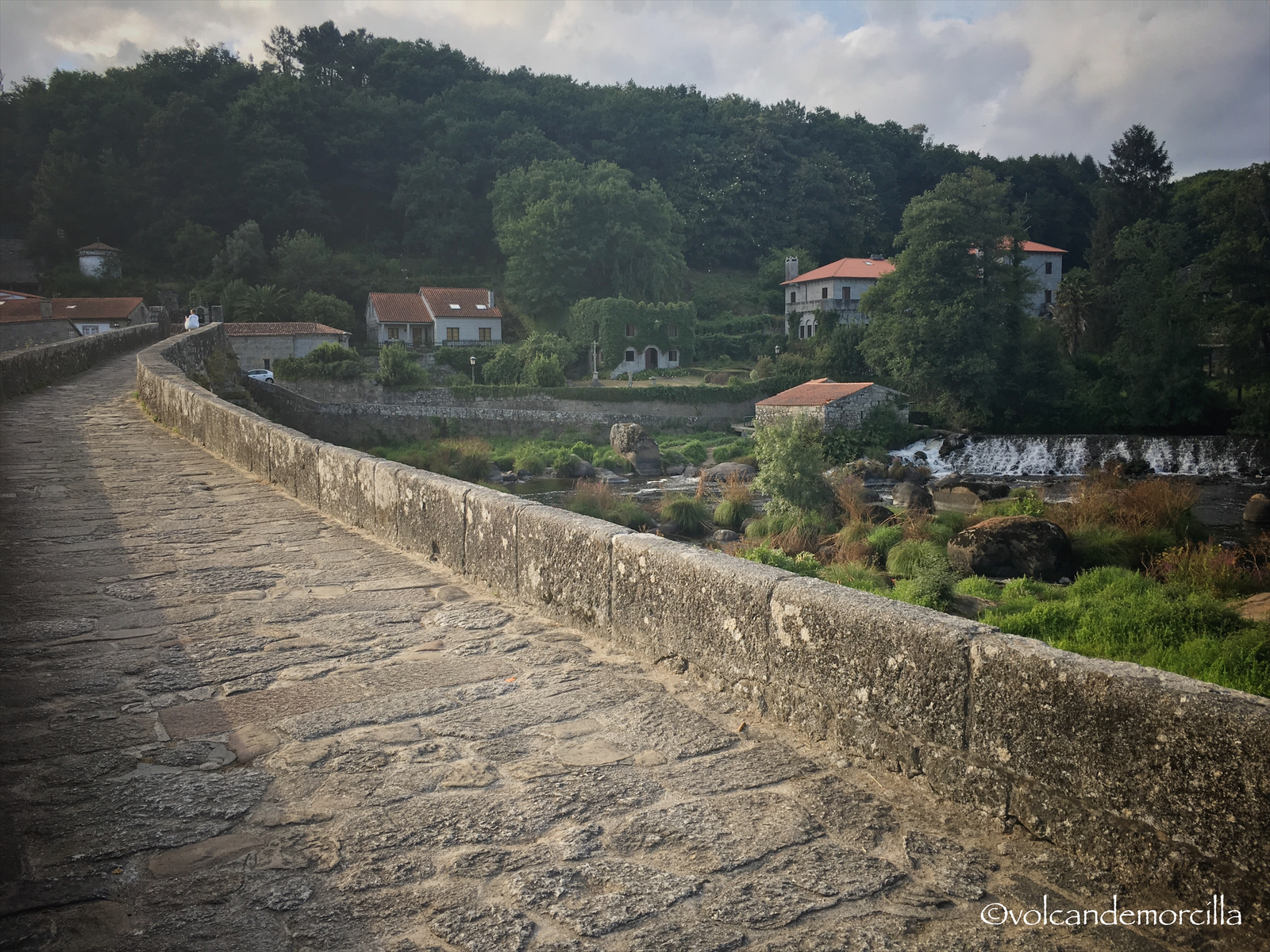
El puente se llama Ponte Vella y cruza el río Tambre. Tiene un encanto especial porque un poco más arriba, en el curso del rio, hay una pequeña presa y una larga cascada que alimenta a tres molinos de agua.

Uno de los molinos ha sido restaurado y alberga un restaurante. Tiene una terraza junto al río dónde descansamos. Fue muy agradable y refrescante cenar escuchando el sonido de las cascadas de agua.
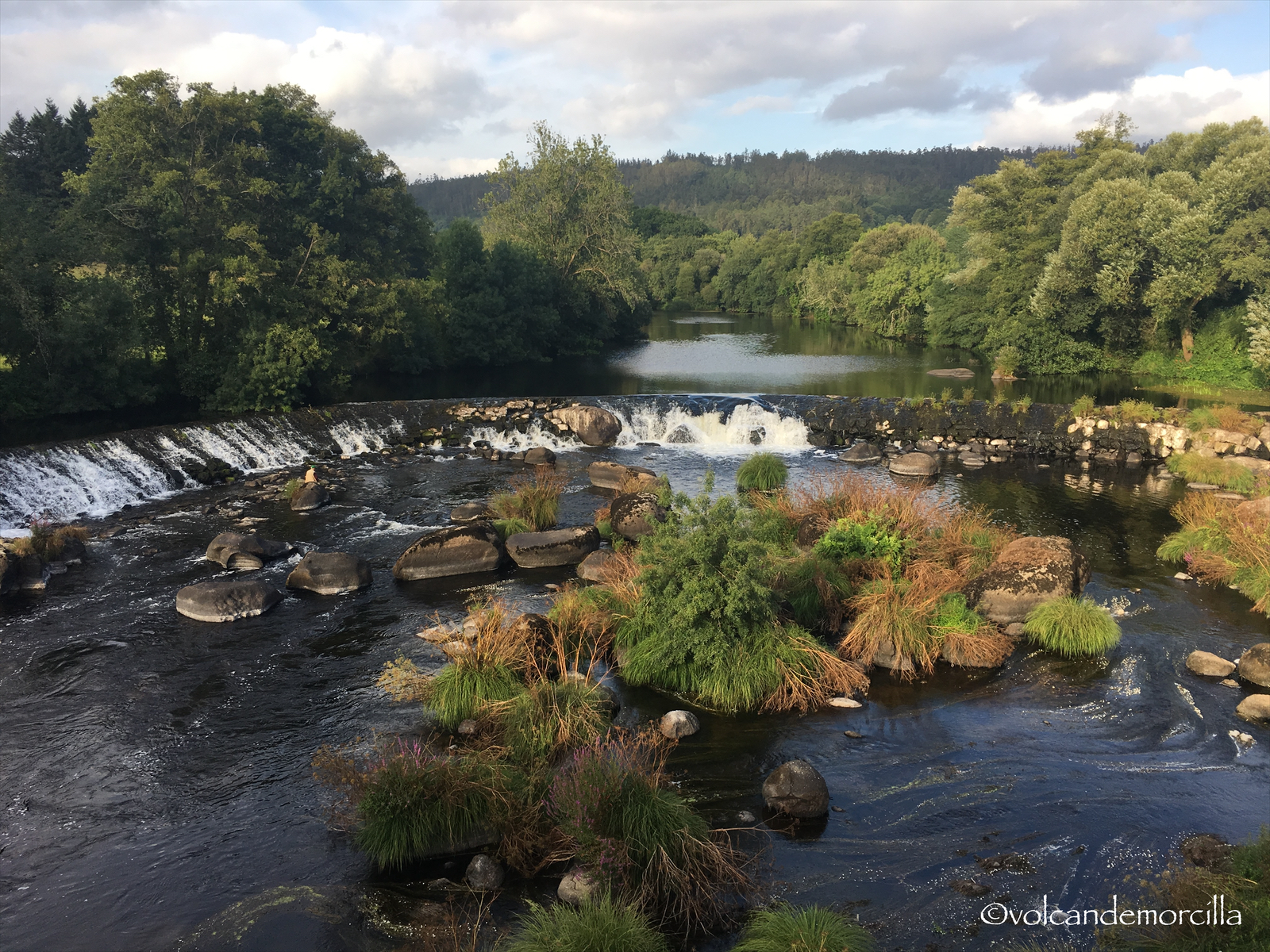
Cuenta la historia xacobea que los discípulos que trasladaban los restos del apóstol Santiago eran perseguidos por tropas romanas. Una vez que cruzaron el antiguo Ponte Vella, este se derrumbó y pudieron escapar de la persecución.
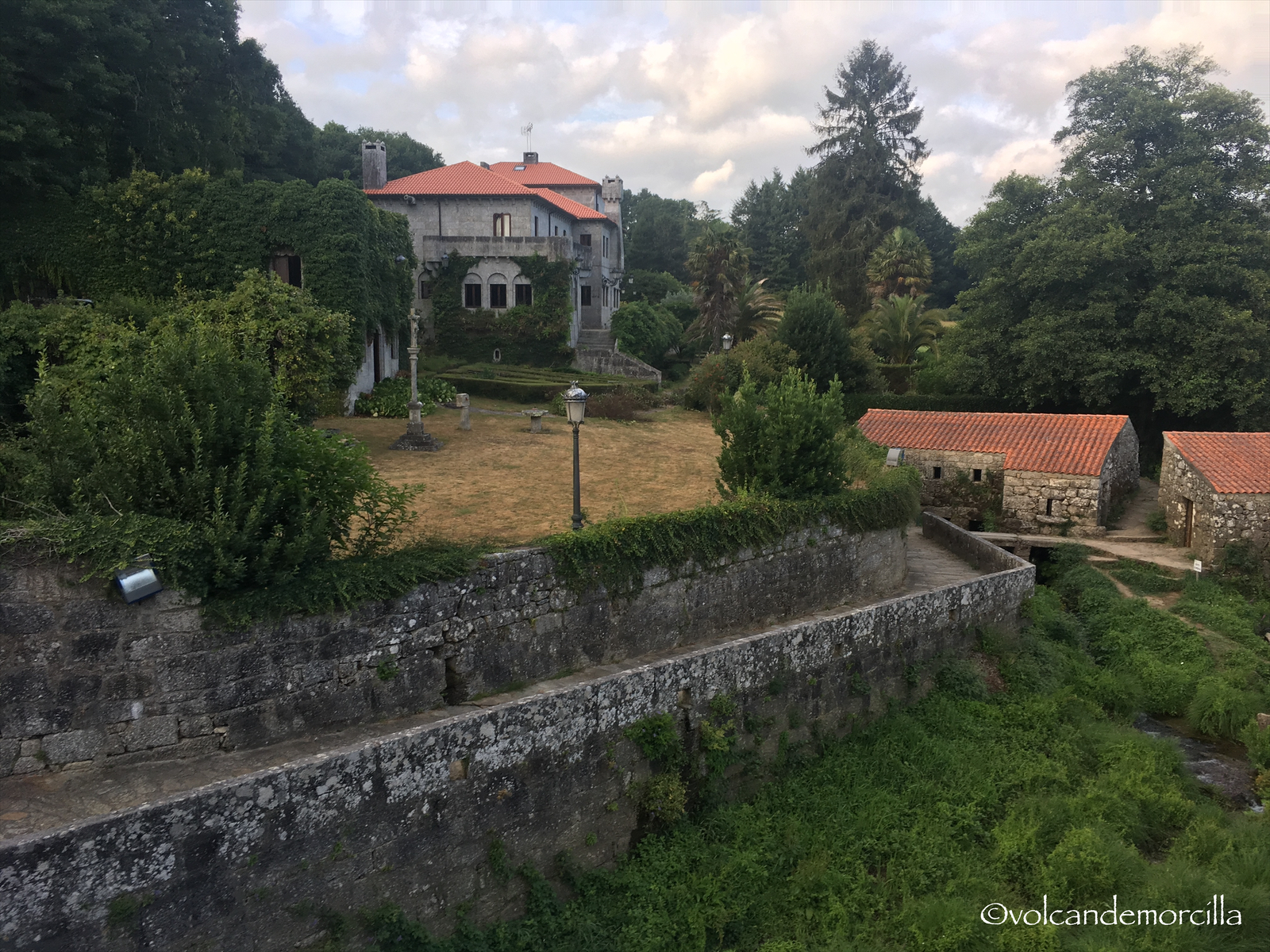
Cuando nosotros cruzamos el río vimos que, al otro lado, hay una iglesia y también un pazo gallego donde una de sus construcciones está completamente cubierta de hiedra.
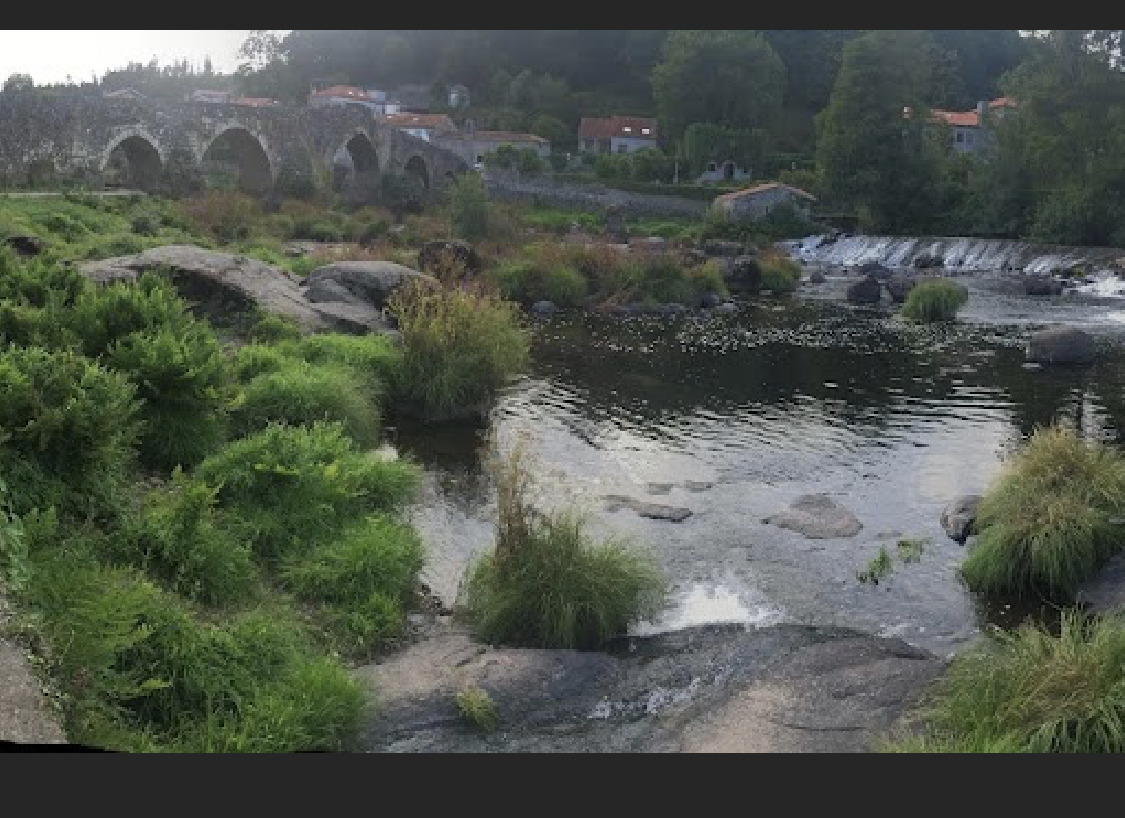
Por ello, tomando como base las fotografías de aquel día, he querido recordar aquel momento mientras pintaba.
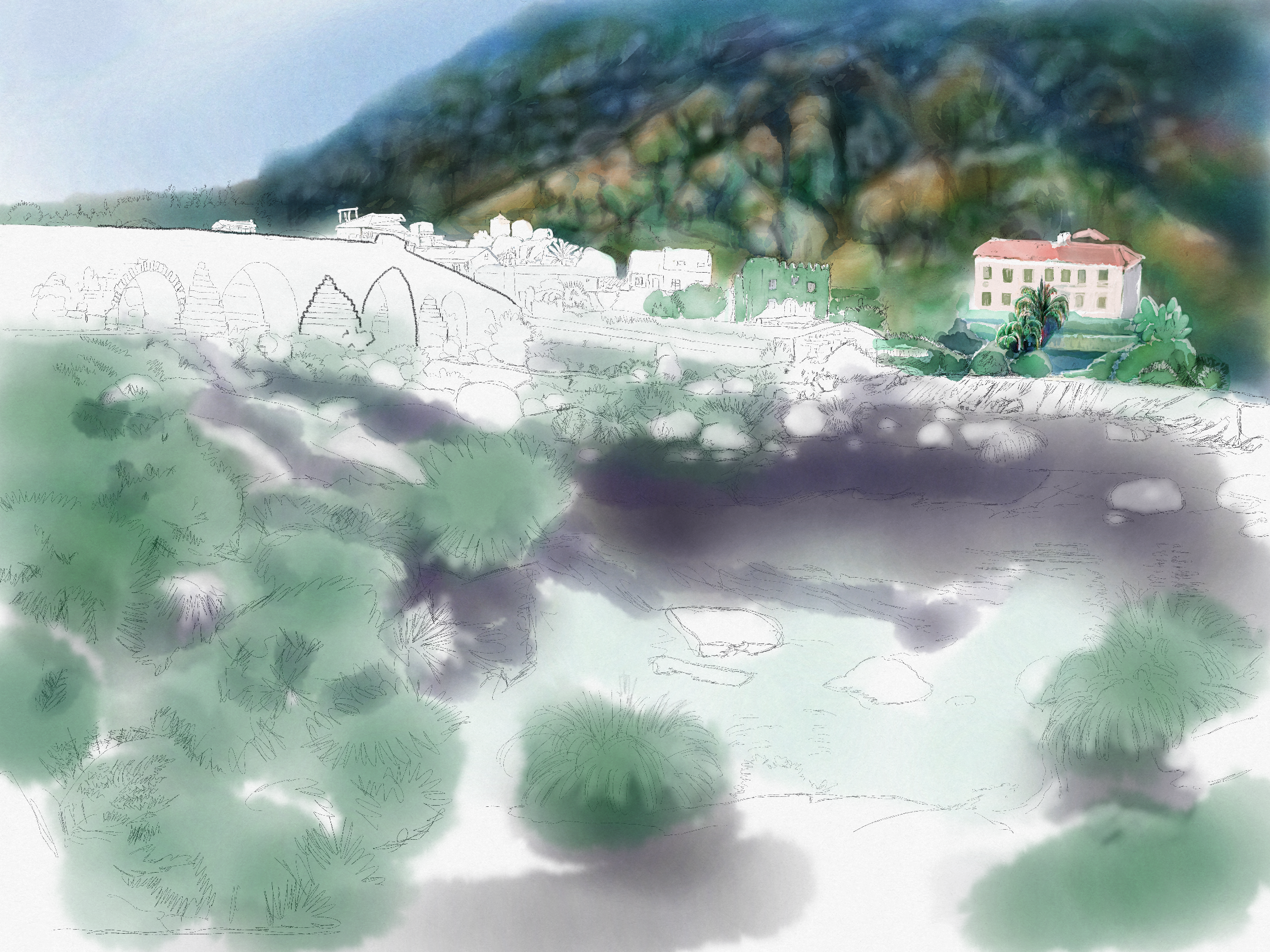
Comencé pintando la colina del fondo. Quería darle un aspecto brumoso y , también, que tuviera algo de volumen. No quería un fondo homogéneo y plano.
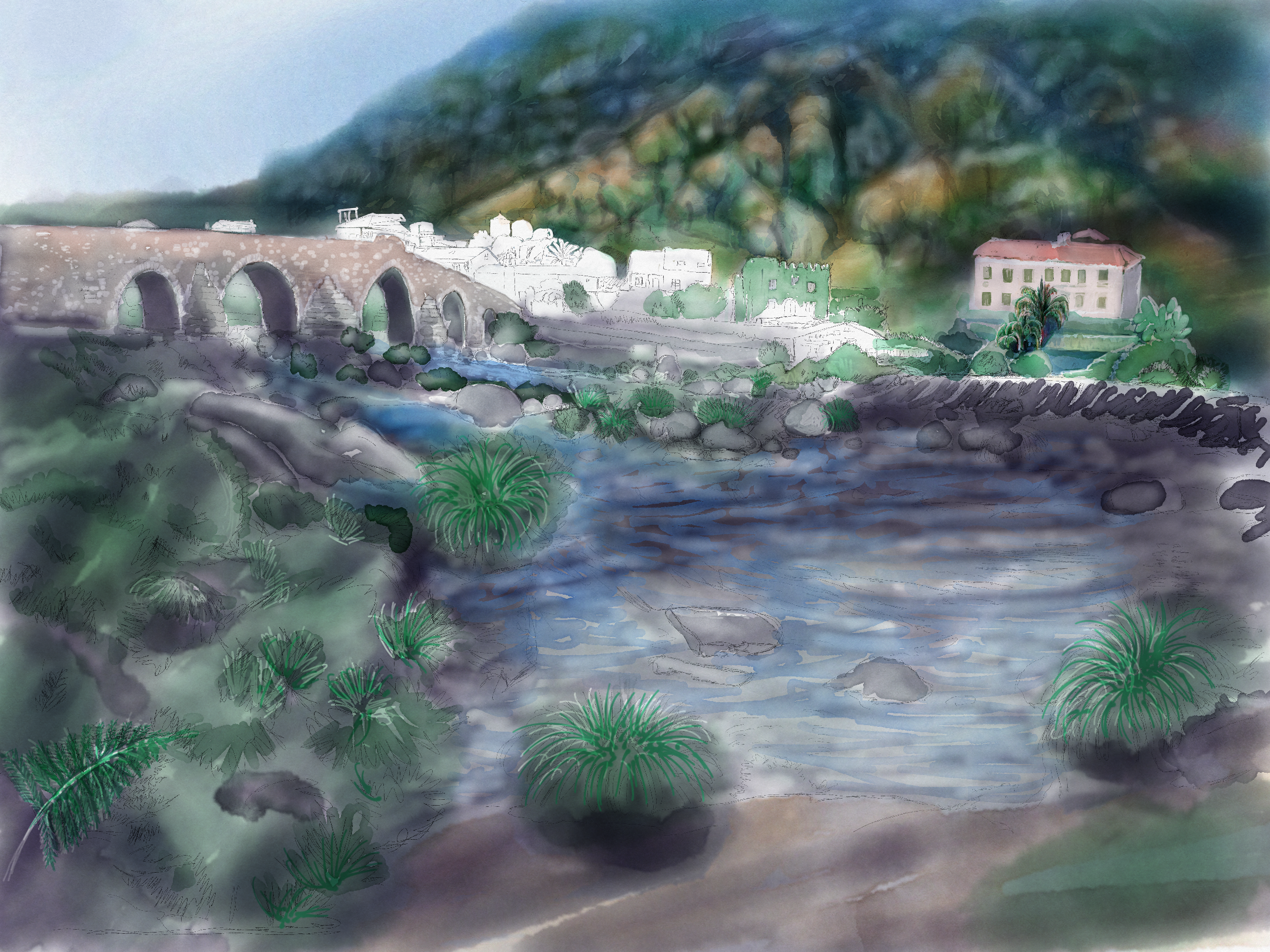
Es conveniente colorear someramente la mayor parte del dibujo antes de empezar con los detalles. Así se consigue una cierta armonía entre los colores y los objetos están más integrados.
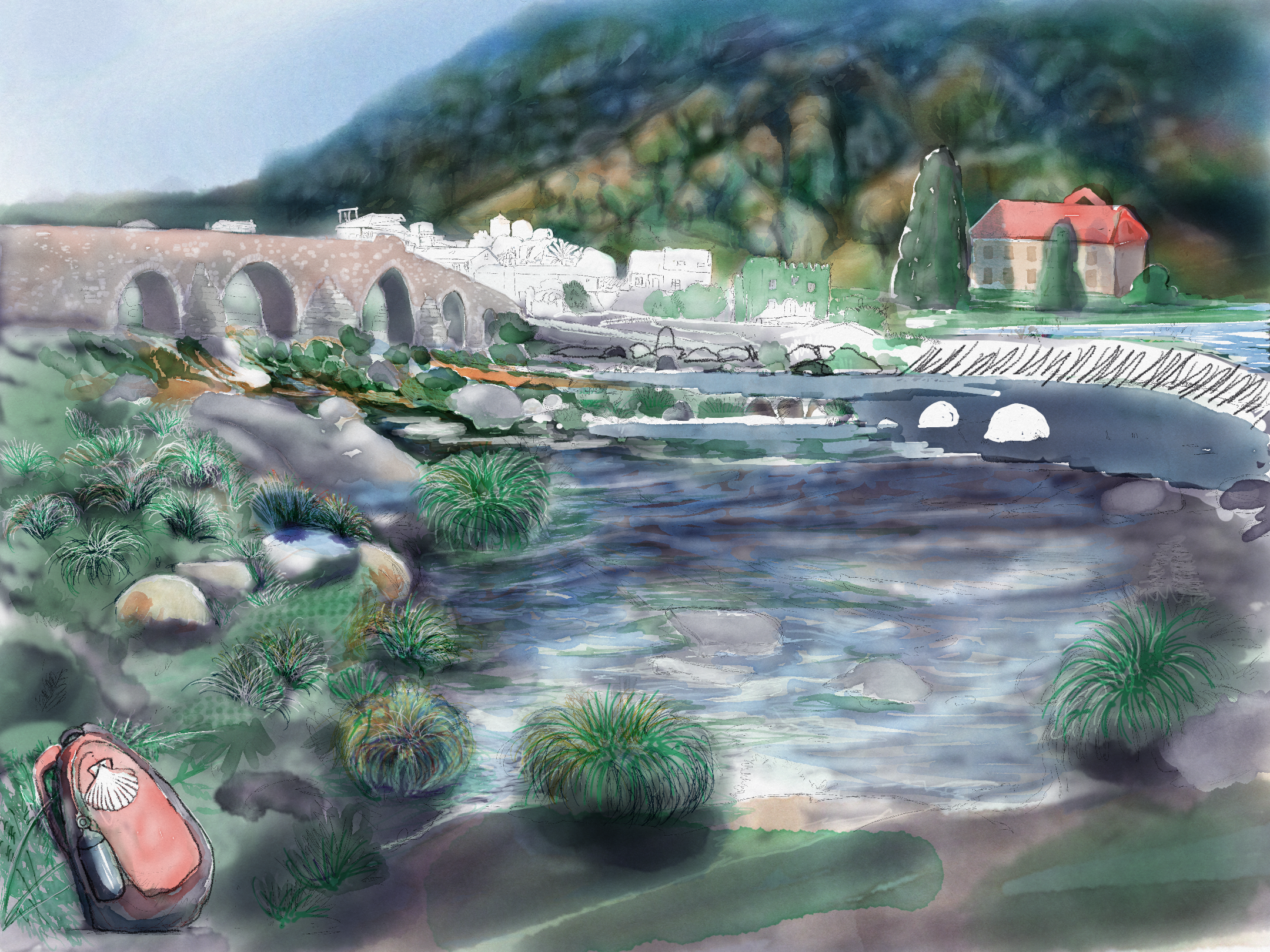
Incluí la mochila para significar que el motivo tiene relación con el Camino de Santiago y equilibrar la composición. La casa en un lado (con su tejado naranja) y la mochila del mismo tono en el otro.
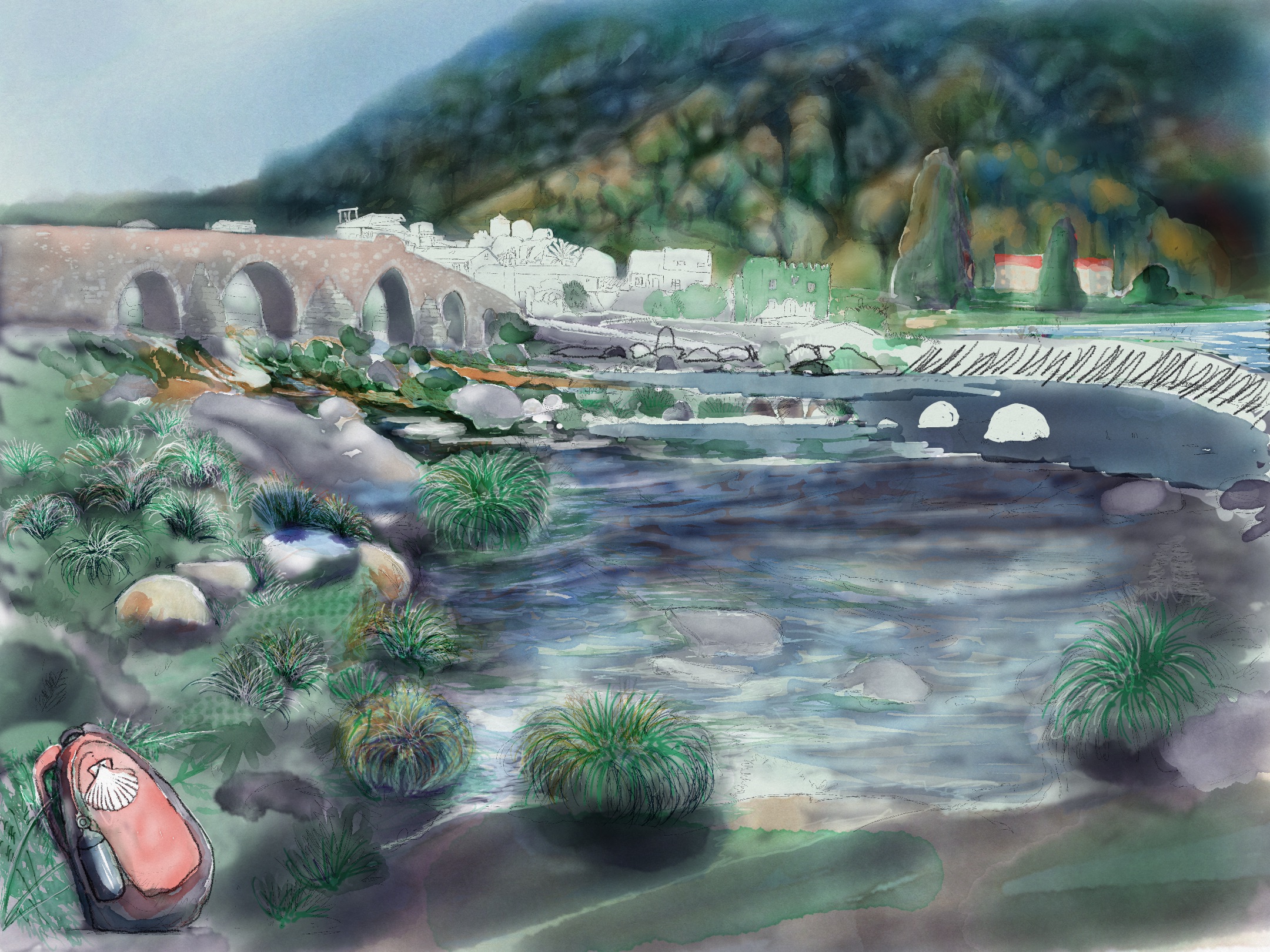
Observé que había pintado la casa demasiado grande y desproporcionada, por lo que fui reduciendo si tamaño y tuve que hacer algunos retoques. Es lo bueno que tiene pintar en el iPad que te permite borrar y corregir los errores.

Por fin, pinté la cascada y aclaré toda el agua intentando hacer las difíciles ondulaciones de la superficie del agua. Lo hice borrando sobre el fondo oscuro. Es la diferencia entre la acuarela normal y la pintura en el iPad. En la acuarela se pinta de la luz hacia lo oscuro. Mientras que en el iPad se parte del oscuro hacia el claro.

Iluminé los juncos y coloreé el agua remansada, pero creo que me quedó demasiado brillante.
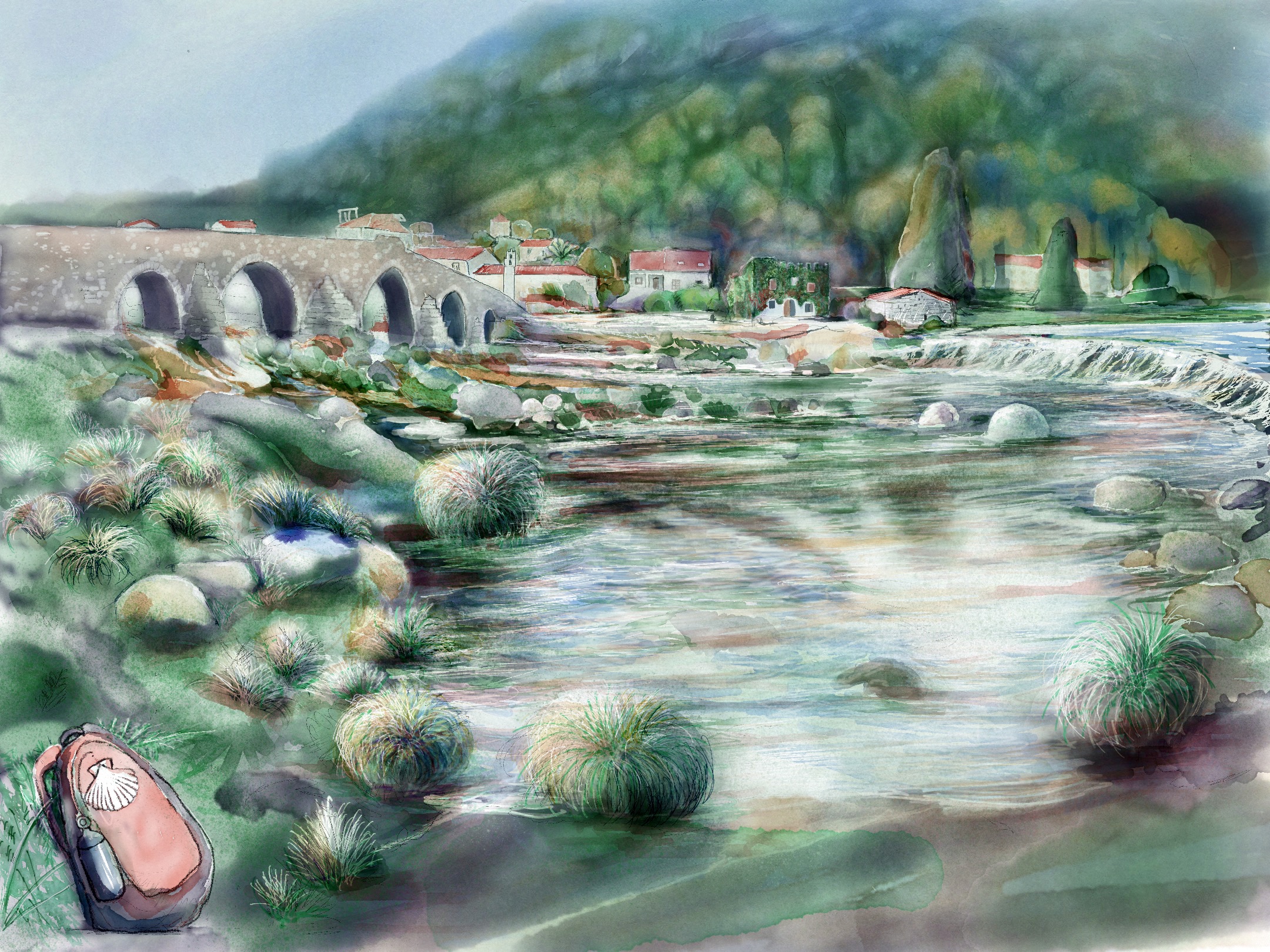
Introduje un color verde que a mi gusta mucho y lo aproveché para oscurecer el agua.
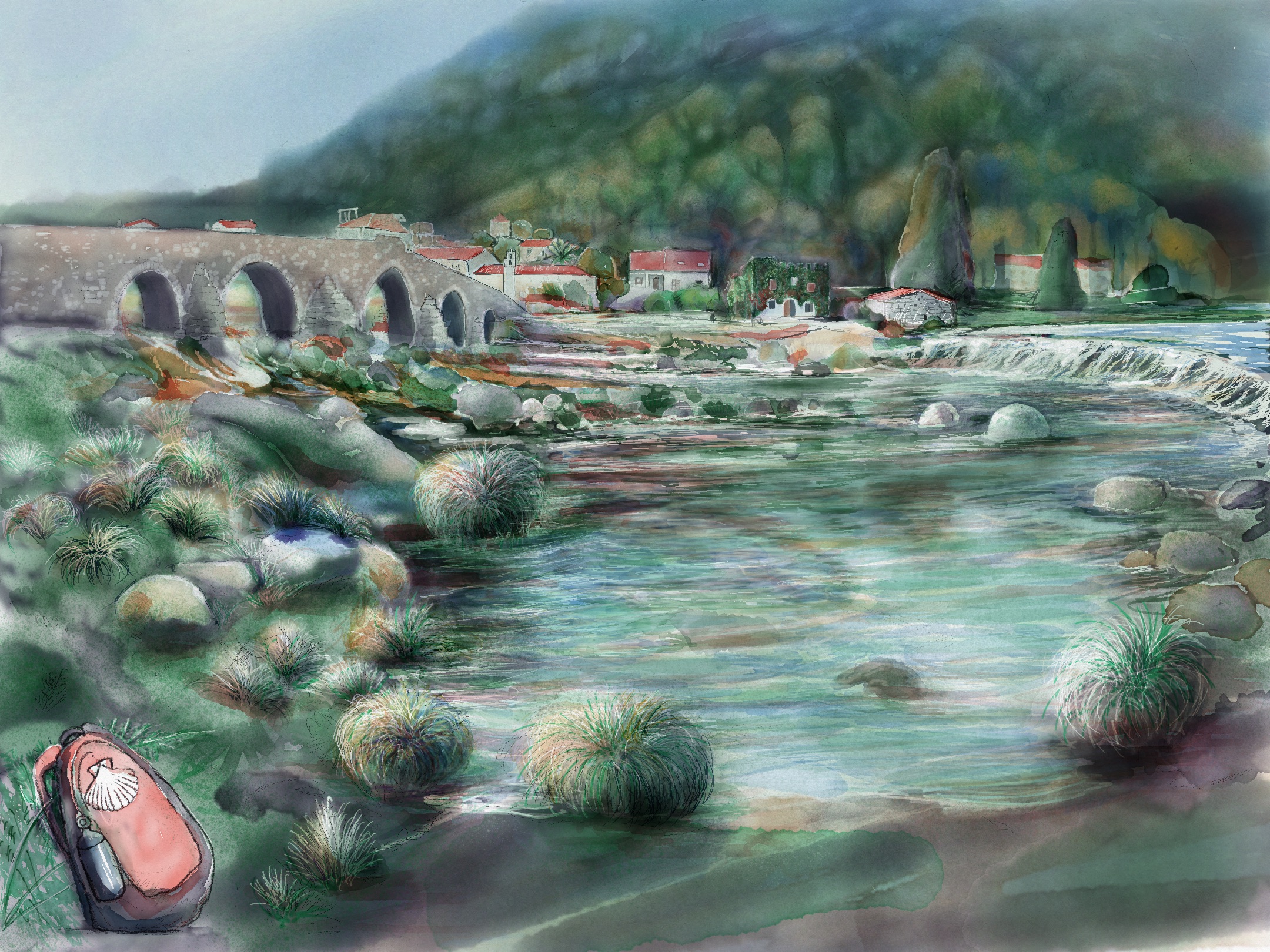
Con la pintura casi terminada, me di cuenta que había quedado muy fría por lo que le introduje una coloración naranja para hacerla más cálida, con los tonos de un atardecer.

Finalmente, oculté un poco la mochila y firmé el dibujo. La rúbrica está un poco difícil de encontrar. Te reto a que la encuentres. La ves?
Ponte Maceira
The end of our first stage of the prologue of the Camino de Santiago was
Ponte Maceira.
In 2017, I undertook the Camino a Finisterre with my son. I have done five Caminos with him and I have very good memories of all those days of coexistence. The one we did to Finisterre was the fourth.
We arrived in Santiago in the morning and quickly set off. From the Plaza del Obradoiro, in front of the Santiago Cathedral, we began to walk.
Little by little, we moved away from the “Field of stars” (compostela) until we lost sight of the towers of the Cathedral. Finally, we entered a forest.
It was a stage full of steep slopes, with frequent ups and downs. A leg-breaking stage but, as it was our first day, we walked with strength and joy, enthusiastic.
In the end, we reach Ponte Maceira, an extraordinary end of the stage. We crossed the bridge and the path of the river. Enjoying the sound of the water and taking several photos before dinner.
Ponte Maceira is a town that has preserved its old stone houses and is embedded in a forest. It has a medieval stone bridge built in the 13th century, on the foundations of a Roman bridge.
The bridge is called Ponte Vella and it crosses the river Tambre. It has a special charm because a little further up, in the course of the river, there is a small dam and a long waterfall that feeds three water mills.
One of the mills has been restored and houses a restaurant. It has a terrace next to the river where we rest. It was very nice and refreshing to have dinner listening to the sound of the waterfalls.
The Jacobean story tells that the disciples who moved the remains of the apostle Santiago were persecuted by Roman troops. Once they crossed the old Ponte Vella, it collapsed and they were able to escape pursuit.
When we crossed the river we saw that, on the other side, there is a church and also a Galician country house where one of its buildings is completely covered with ivy.
Therefore, based on the photographs of that day, I wanted to remember that moment while painting.
I started by painting the hill in the background. I wanted to give it a hazy look and also have some volume. I did not want a homogeneous and flat bottom.
It is a good idea to lightly color most of the drawing before starting with the details. This achieves a certain harmony between the colors and the objects are more integrated.
I included the backpack to signify that the motif is related to the Camino de Santiago and to balance the composition. The house on one side (with its orange roof) and the orange backpack on the other.
I noticed that I had painted the house too big and disproportionate, so I reduced its size and had to do some retouching. It's the great thing about painting on the iPad that allows you to erase and correct mistakes.
At last, I painted the waterfall and cleared all the water trying to make the tricky ripples on the surface of the water. I did it by erasing on the dark background.
It's the difference between normal watercolor and painting on the iPad. In watercolor you paint from light to dark. While on the iPad it starts from dark to light
I lit up the reeds and colored the standing water, but I think it was too bright.
I introduced a green color that I really like and I used it to darken the water.
With the painting almost finished, I realized that it had been very cold, so I added an orange color to make it warmer, with the tones of a sunset.
Finally, I hid the backpack a bit and signed the drawing. The rubric is a bit difficult to find. I dare you to find it. Do you see her?
Cómo lo hice / How I do it
He utilizado el iPad para hacer el dibujo, usando el Apple pencil.
Utilicé el programa Sketches para la creación utilizando la herramienta rotring, acuarela y goma de borrar.
Para el último retoque de color utilicé el editor de fotografías del iPhone.
I have used the iPad to make the drawing, using the Apple pencil.
I used the Sketches program for the creation using the rotring tool, watercolor and eraser.
For the last touch up of color I used the photo editor of the iPhone.

Los dibujos son míos y originales.
¡Espero tus comentarios!
The draws are originals and mine.
I await your comments.
Buen Camino!